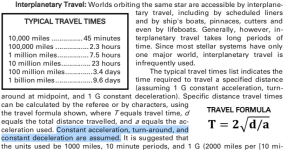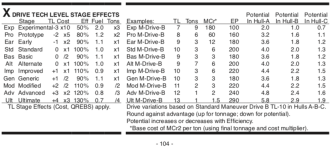You still appear to be unable to grasp the at least 288 accelerations limit of the fuel carried.
Yes, I grasp that you really want the M-drive to be a rocket, but that is not what I see in LBB2'77.
LBB2'77, p1:

Constant acceleration for over a week is assumed for a "Typical Travel Time".
LBB2'77, p5:
A power plant, to provide power for one trip (internal power, maneuver drive power, and other necessities) requires fuel in accordance with the formula: 10Pn.
...
The formula indicates amount of fuel in tons, and all such fuel is consumed in the process of a normal trip.
The large power plant requires fuel to power the small M-drive. The M-drive require no fuel or propellant itself. The fuel is consumed whether you spend a long time accelerating or not.
LBB2'77, p26:
There is no restriction on the number of accelerations which may be made by a fuelled ship, but the total acceleration in a turn in inches, may not exceed the size rating of the M-Drive. Should the letter class of the M-Drive (or the power plant) be reduced by combat damage, it may not exceed the revised size rating.
The power plant is just as important for the resulting acceleration as the M-drive.
The power plant burns the fuel to provide power to the M-drive that uses the power to produce thrust, hence the M-drive is not a rocket.
Yet:
LBB2, p22:
3. Thrust: Ships maneuver using reaction drives, referred to as M-Drive or maneuver drive. Their thrust is measured in Gs (Gravities) expressed as a vector of both length and direction.
So, it is a reaction drive that produces thrust apparently using negligible reaction mass, so perhaps an ion drive?
Small craft is a separate case using different rules:
LBB2, p6:
Fuel is also used by the maneuver drives of non-starships. When used in such vessels displacing under 100 tons (ship's boats, shuttles, pinnaces, etc) 10 kilograms (1/100th of a ton) of fuel is sufficient for 1G of acceleration for 10 minutes.
Small craft have no power plant fuel requirement, but a "M-drive" that consumes significant amounts of fuel directly to produce thrust. That might be an extremely efficient rocket?
With a rocket, but no power plant, it would of course be unable to mount significant energy weapons, but that's not the case is it?
1 kg/minute for ~500 kN is orders of magnitude better than what rockets can do currently. A Vega P80FW burns 88 tonnes (88000 kg) fuel to produce about 3000 kN for two minutes, so would be about 7300 kg/min to produce 500 kN.
A 5000 ton starship using the same fuel consumption (scaled up) as a 50 ton small craft would need 100 times as much fuel, or 100 kg fuel per minute = 1 ton per turn. With a power plant fuel allotment of 10 tons it would be able to accelerate at 1 G for 10 turns. It certainly would not have any "at least 288 accelerations" worth of reaction mass.



